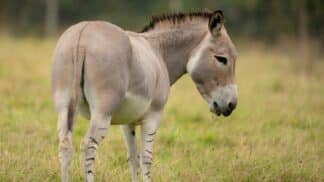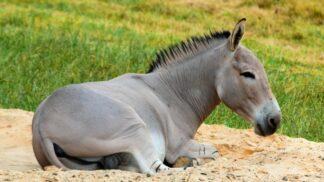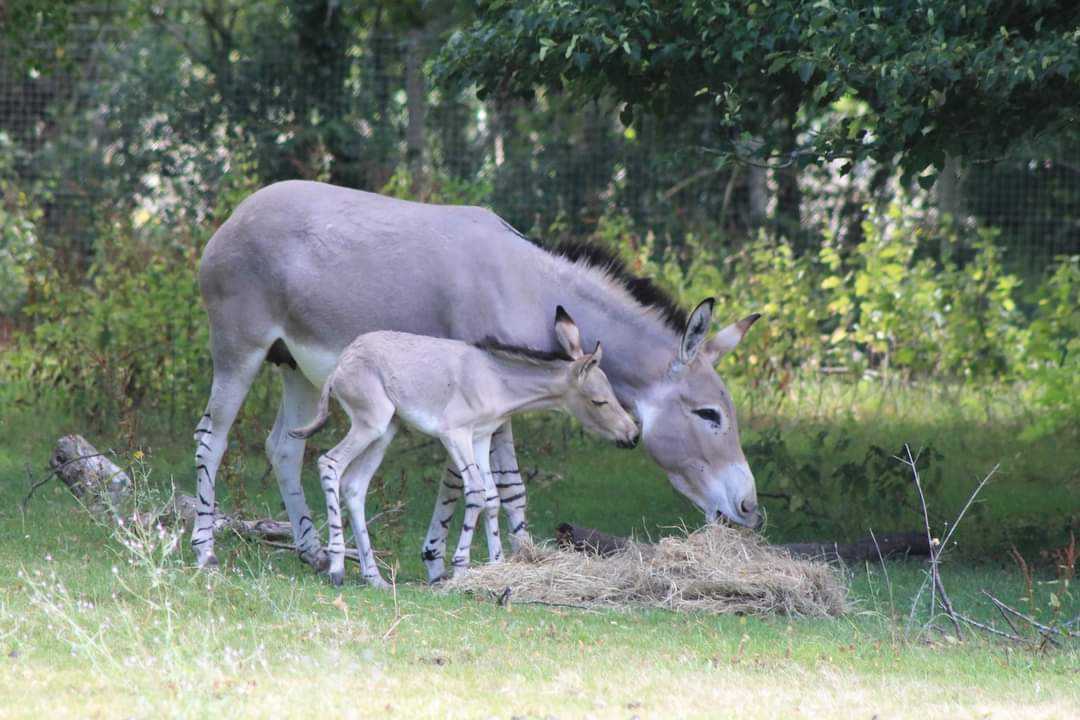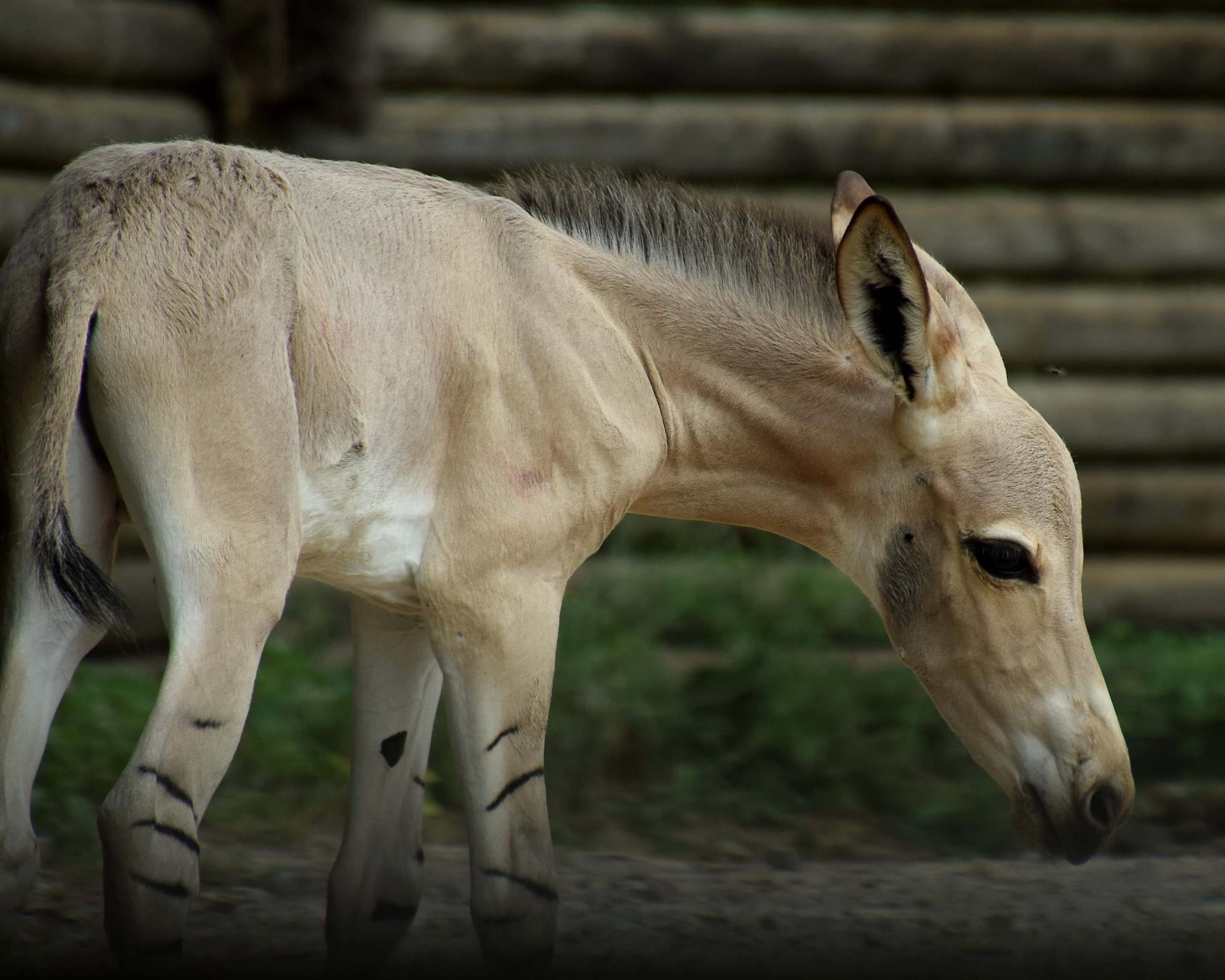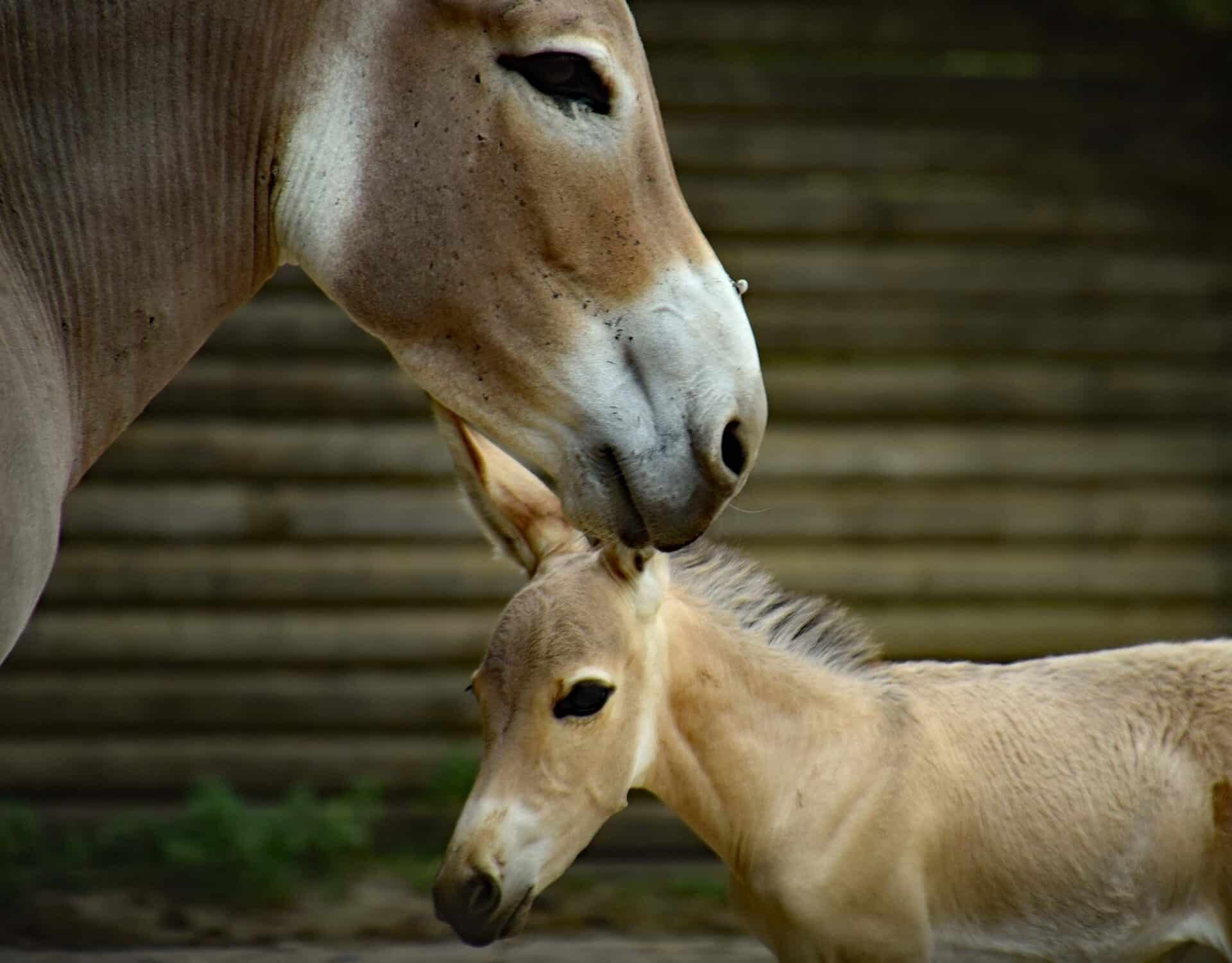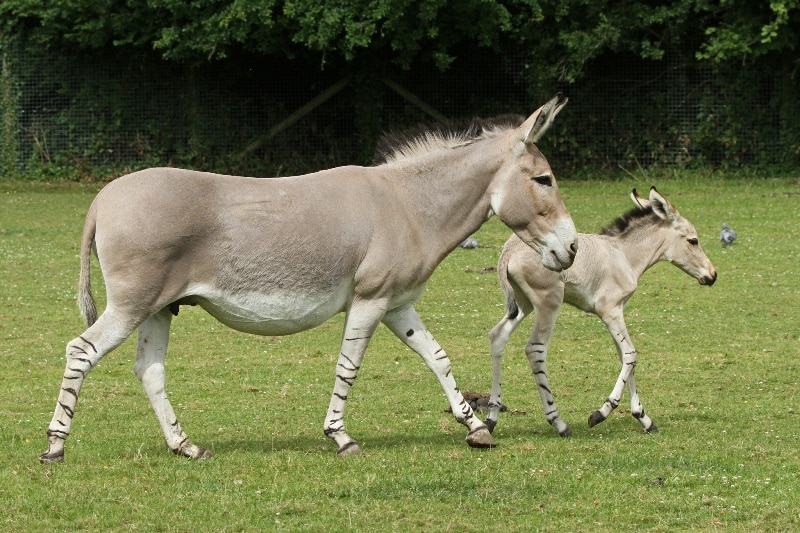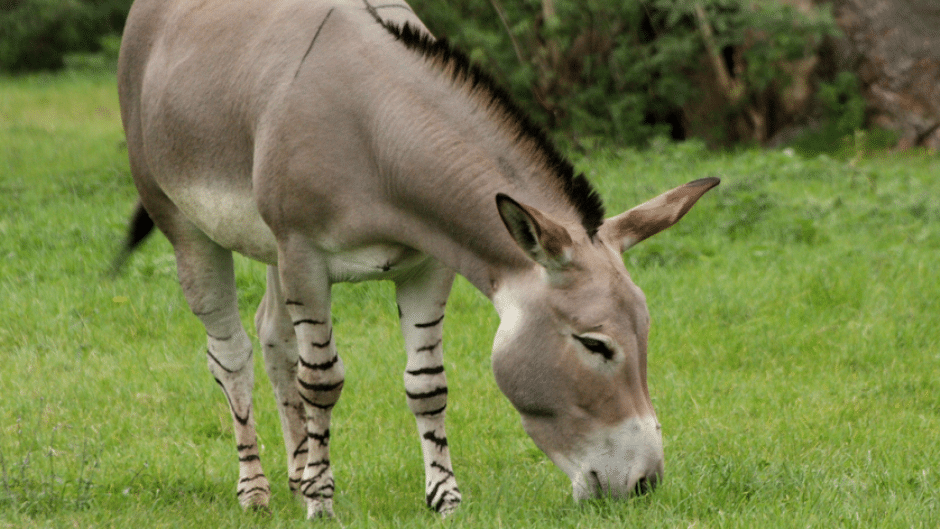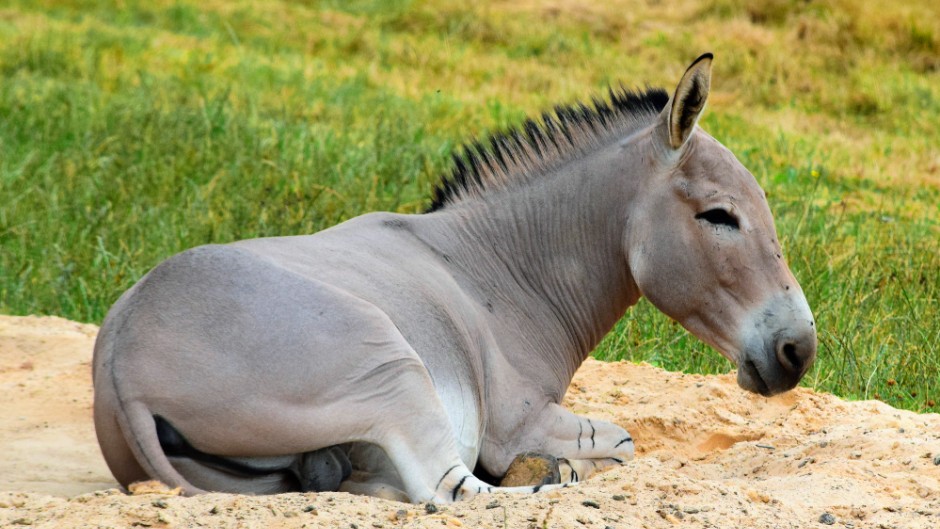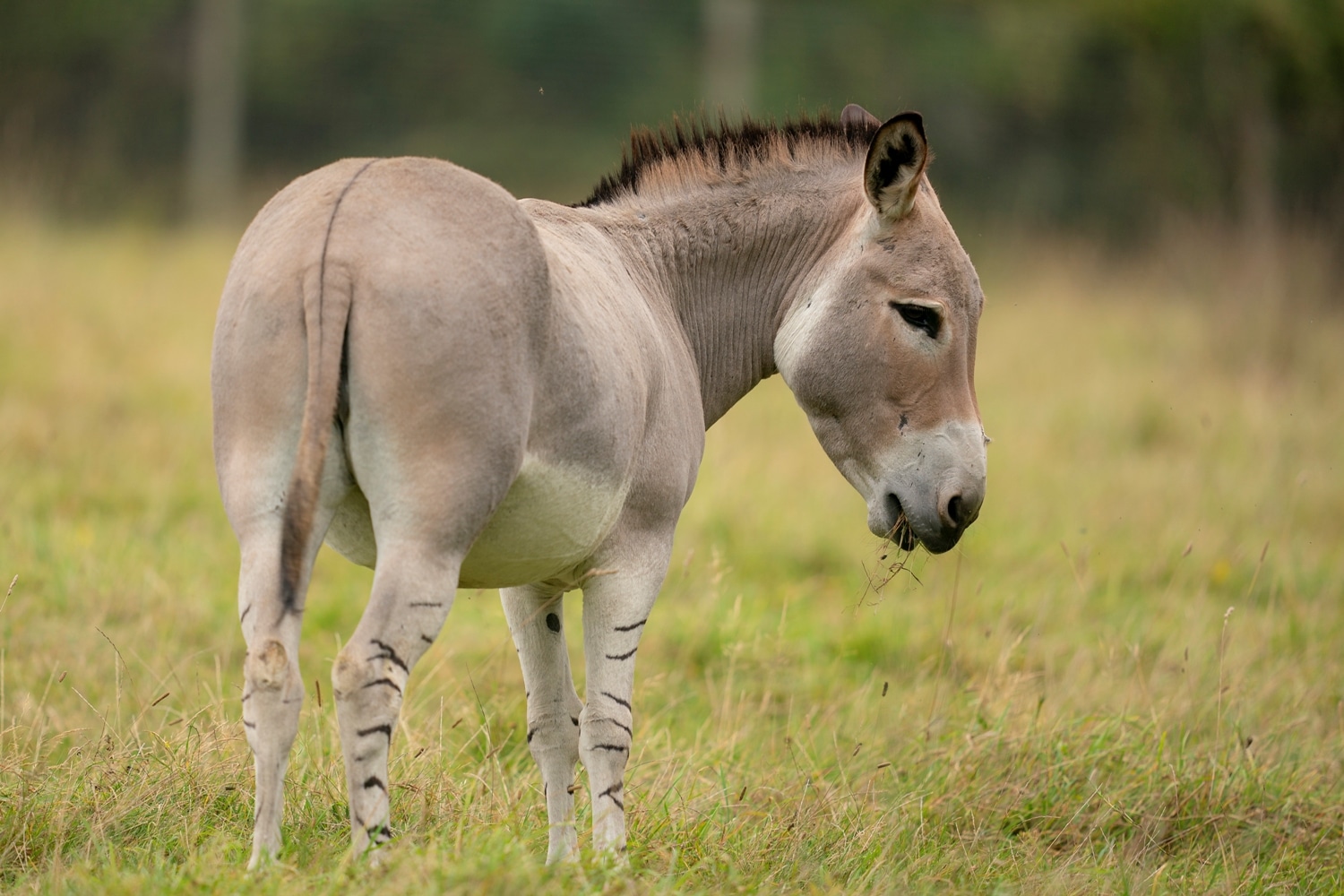African wild ass
Common Name: African wild ass
Scientific Name: Equus asinus somalicus
The wild ass can go without water for up to three days.
Although they can sustain water losses of up to 30% of their body weight, the African wild ass can replenish this water loss within two to five minutes.
Female African wild asses maintain higher body temperatures than males by sweating less so they can retain water for longer.
Fast Facts
-
Status
Critically Endangered
-
Size
Head-body: 200 cm; tail length: 45 cm
-
Weight
250 kg
-
Gestation
330-365 days
-
Young
1
-
Life span
25-30 years
In the wild
African wild asses prefer to graze on grass but will also browse bushes and trees for leaves. They use their sharp front incisor teeth and their hooves to break apart the tougher food. African wild asses can go for longer periods without water than other similar species and are capable of surviving on little food.
The African wild ass occurs in Eritrea, Ethiopia and Somalia, on the eastern Horn of Africa. Their primary habitat is arid (dry) and semi-arid bushland and grassland. They can also inhabit hilly and stony deserts but tend to avoid sandy habitats.
African wild asses live in small groups of typically fewer than 5 individuals, but the only permanent bonds are between mothers and their offspring. Breeding tends to be restricted to the wet season and most females give birth to one foal every other year. Foals are fairly independent soon after they are born, often remaining alone for long periods of time as their mothers seek water to maintain their supply of milk. Foals begin grazing within weeks of birth but still suckle for six months.
The African wild ass, especially the young and the weak, fall prey to African lions and Ethiopian wolves. They are also hunted by humans for food across their native range.
Fewer than 200 African wild asses are thought to survive in the wild. The major threat to the African wild ass is being hunted by humans for food and medicinal purposes. Competition with livestock is also a major problem, as it can result in limited access to drinking water and food, with reproductive females and foals less than three-months old being most at risk. In both Eritrea and Ethiopia, research and conservation programs have been critical for sustaining African wild ass populations by involving local sheep and cattle farmers in their conservation.
